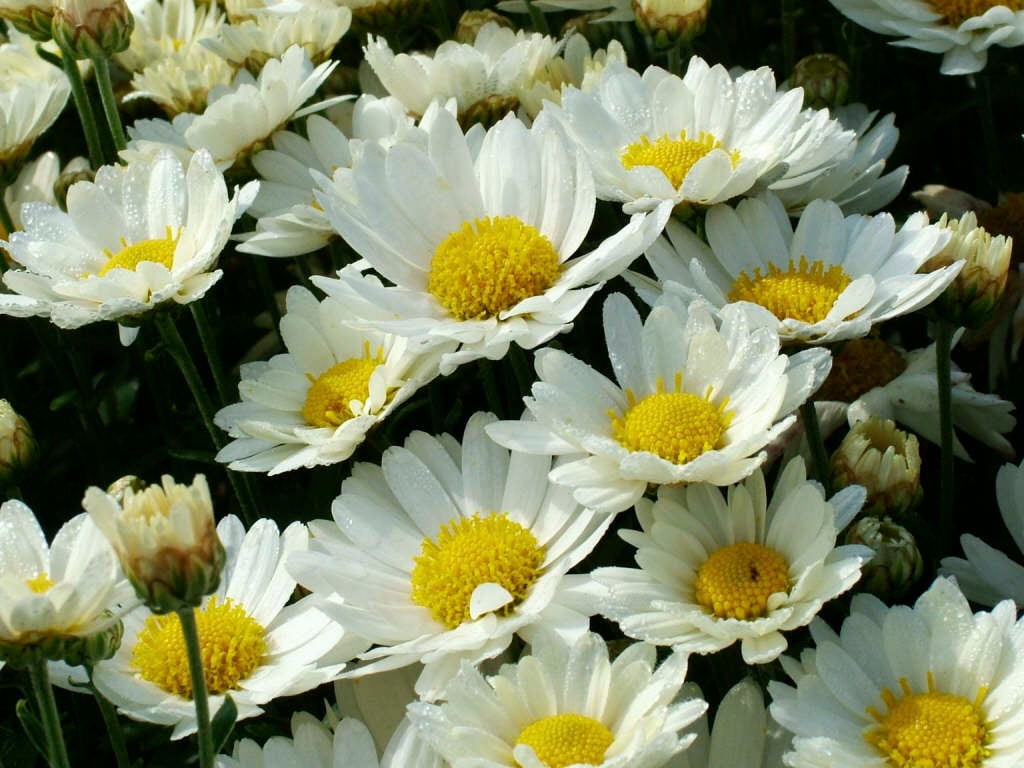Size
Ultimate height
0.1–0.5 metresTime to ultimate height
1–2 yearsUltimate spread
0.1–0.5 metresGrowing conditions
Moisture
Well–drainedpH
Acid, Alkaline, NeutralColour & scent
| Stem | Flower | Foliage | Fruit | |
| Spring | Green | |||
|---|---|---|---|---|
| Summer | White | Green | ||
| Autumn | White | Green | ||
| Winter |
Position
- Full sun
Aspect
South–facing or West–facing or East–facing
Exposure
Sheltered Hardiness
H3Botanical details
- Family
- Asteraceae
- Native to GB / Ireland
- No
- Foliage
- Deciduous
- Habit
- Bushy
- Potentially harmful
- Skin allergen. Wear gloves and other protective equipment when handling
- Genus
Chrysanthemum are erect woody-based perennials with aromatic, pinnately lobed leaves and flowerheads of diverse form, from late summer to late autumn
- Name status
Accepted
How to grow
Cultivation
Grow in a well-drained position, in full sun. Performance will be slightly better in alkaline, moderately fertile soil. Divide every 3 years in spring. Cut down to 10cm (4in) after flowering and provide a dry mulch or dig up and overwinter in frost free conditions
Propagation
Propagate in spring, by division or basal stem cuttings
Suggested planting locations and garden types
- Coastal
- Cottage and informal garden
- City and courtyard gardens
- Patio and container plants
- Banks and slopes
- Flower borders and beds
Pruning
Cut down to 10cm (4in) after flowering if being grown in a frost free area, otherwise lift and overwinter
Pests
May be susceptible to aphids, capsid bug and leaf miner
Diseases
May be susceptible to glasshouse grey mould, powdery mildews and chrysanthemum white rust
Get involved
The Royal Horticultural Society is the UK’s leading gardening charity. We aim to enrich everyone’s life through plants, and make the UK a greener and more beautiful place.
